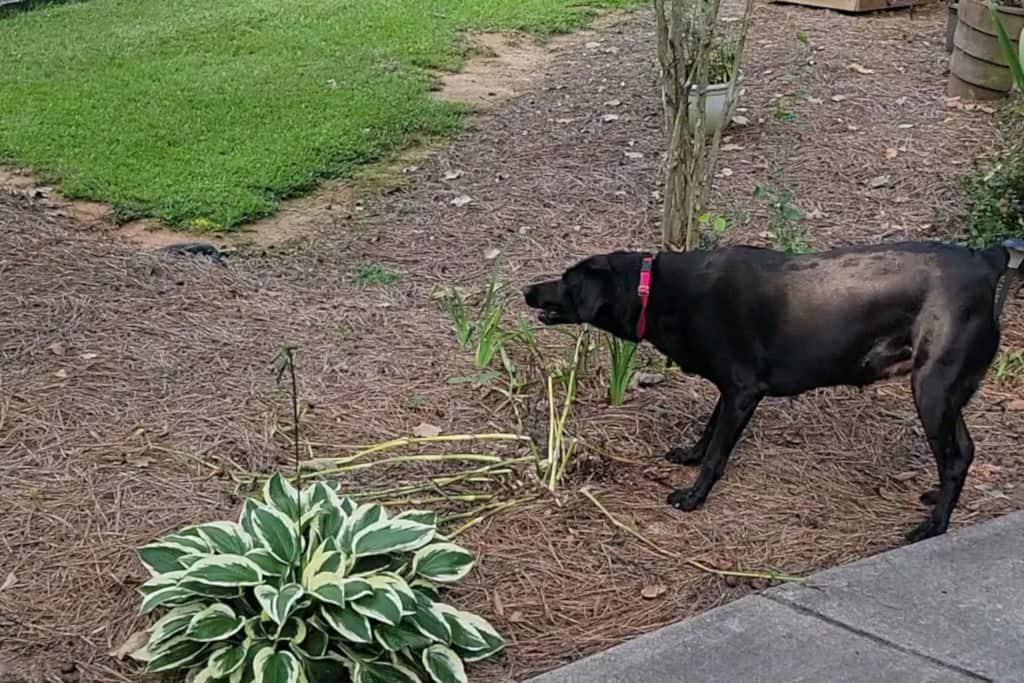Having your neighbor harassing your dog can be tricky when you’re unsure of what you can do and your legal rights. The best action will depend on the situation, state laws, and the dog’s typical behavior.
The first thing you should do is talk to your neighbor. If that fails, consider legal action. Film them when they’re doing it and record telling them not to do it. Additionally, record yourself controlling your dog in such a situation. All these things will act as good evidence.
When your neighbor harasses your dog, it’s not only distressing for your pet but a significant concern for pet owners, as it strains neighborhood relationships. Dealing with such a neighbor and your legal rights are discussed in this article.

What Counts as Provoking a Dog?
Because each state’s rules may differ slightly, you should conduct your research. Some States can be somewhat different in these laws, so it’s essential to know them.
In the State of Texas, examples of provoking behavior include:
- Hitting the dog
- Trapping the dog in a small space
- Startling the dog
- Stepping on its tail
- Pulling on its tail, ears, legs, or fur
Threatening gestures to the dog’s owner are another example of provocation. In this situation, the dog is responding following his innate group instincts.
Actions that constitute non-provoking a dog include:
- Walking toward a dog
- Carrying a package and walking toward the dog and owner
- Addressing the owner
- Being seated, then rising and facing the dog
- Reaching to pet a dog
- Playing with a dog and patting him
- Feeding a dog
- Extending a hand or arm over a fence
The dog owner must make everyone approaching the dog aware that their dog is generally frightened in specific situations. This allows that person time to modify their conduct to put the dog at peace.
In any event, never leave your dog unattended outside. Even if you are legally protected, and someone is wounded while antagonizing your dog, it will be a huge hassle for everyone involved. It’s better if you’re not put in that scenario in the first place.
Dogs, much like humans, have their stress limits. Consistent harassment from a neighbor can lead to anxiety and behavior changes in your pet, so addressing the issue promptly is essential for their well-being.
How to Deal With Neighbor Taunting Your Dog?
First, speak with your neighbor. Stop by their residence and ask them why they’re doing it, in a friendly manner. People are usually ashamed when faced with their foolish behavior in public. Make it appear as if you’re concerned about their safety, which you probably are.
If the neighbor doesn’t want to listen, the best thing is to document all their antagonizing in text, video, and pictures. If something does happen, you will have evidence that your dog was regularly provoked.
If your neighbor openly threatens your dog, take this seriously. Just like threats against humans, threats against animals can be a precursor to more aggressive actions, and documenting these threats can be crucial in building a case.
If children are antagonizing your dog, try kindly reprimanding them. If they ask, you can explain why they shouldn’t be doing it and how it affects the dog. Some children will listen, while others will not. Talk to the parent in that instance.
Those children are the responsibility of the parents, but these are your dogs, and you should do what is best for them. You have the right to politely warn them not to run up to your dogs like that since it upsets them and isn’t a good game to play.

When your dog exhibits the desired behavior, you can try incentive training. If your dog is protective of you, he may become especially so during this conflict. It would be best to train your dog that these folks aren’t a threat to you, only unpleasant.
If you wish to speak to the council, you should prepare a case. Take a video of this when it happens next. Give your neighbor a clear warning on camera. This makes it excellent video evidence.
In addition, video yourself removing the dog from the scenario to demonstrate that you have control of the dog. That will demonstrate to an HOA, council, or police officer that you are in control of your dog and that it only acts protectively toward your property. Finally, you can install security cameras to monitor these incidents when you’re not there.
Is It Illegal to Taunt Your Neighbor’s Dog?
Teasing the house dog or acting silly is not illegal. If your neighbor is doing this, you should concentrate on controlling and training your dog because you cannot control your neighbor. If they’re making a noise, ignore the neighbor and focus on the dog.
On the other hand, teasing a working dog is illegal. It’s best to look up the rules and laws about dogs and people in your state/county. You must be aware of your own rights as well as the rights of your pets.
Consider safeguarding your dogs and having a video camera to watch things and collect evidence of the taunting. Then look into seeking legal advice from an attorney.
Pro tip: Just in case, don’t put up “Beware of Dog” signs. A Beware of Dog sign may imply that you are aware of your dog’s violent nature, making it difficult to argue against liability if something happens. The “Dog on Premises” sign might be more effective.
Can I File Harassment Charges Against My Neighbor?
You can typically take legal action if your neighbor is harassing your dog. You will need evidence in video and pictures, sometimes written as well.
The first step is recording and sending it to the police and animal control. Usually, there are regulations prohibiting harassing animals. You can sue your neighbor if you can prove it with video evidence.
You could talk to other neighbors if you live in a close community. These people are probably irritating more people than just you. And having a group of you with grievances will be more effective in bringing about change.
Having this on video, as well as taping yourself to get your dog under control, is a valuable piece of proof to have. You can then notify the authorities that your neighbor is purposely antagonizing your dog. You can show that the dog was provoked and protected its property if anything happens.
In some circumstances, if your dog ever escapes and your neighbor kills him, your neighbor may have committed an animal cruelty offense. Your dog would still be dead, which is terrible. Therefore, preventing your dog from entering your neighbor’s yard requires precautions.
Finally, on the property line, you may grow Leyland cypress. They can grow up to 3 feet every year. They are fantastic for offering privacy. The taller the plants, the faster you will achieve privacy for you and your dog.
Final Thoughts
Neighborhood disputes can escalate quickly, especially when pets are involved. When your neighbor threatens or antagonizes your dog, your proactive actions, backed by knowledge of your rights, can make all the difference in ensuring safety.
As dog owners, we sometimes underestimate the trauma our pets can undergo when consistently threatened or harassed. While physical barriers like fences or plants can provide a respite, it’s the knowledge of your rights and proactive actions that ultimately keep your furry friend safe.
FAQs
What if your dog bites while being provoked?
In most states, if a dog were provoked in some way, the owner would not be held accountable for the bite. This regulation may be restricted by a state’s “dog bite” statute, but it is rarely abolished entirely. Many elements come into play here, including past conduct, circumstances, etc.
What to do about neighbors’ aggressive dogs?
If there is no imminent risk, but you believe your neighbor’s dog is vicious, being mistreated, or posing a threat to your community, you should speak with the owner, contact animal control, or the police. Do not endanger yourself or others by not doing anything.
What can I do if a neighbor complains about my dog?
You should listen, empathize and investigate your dog’s behavior. If it turns out that your dog has some problems with aggression, you might want to invest time and energy into training your dog. It’s best to train your dog than to risk having it hurt someone and be put down. If that happens, you’d be guilty, and your dog would die.
Can you be sued if your dog barks at someone?
If someone sues you for your dog’s barking, they’d need to prove a few things. First, they’d need to prove that your dog’s barking is excessive and a nuisance. Then, they’d need to prove that it causes them physical discomfort. The bottom line, they can sue you, but they’d have a hard time getting anything out of it.
Alex, a passionate animal lover, has experience in training and understanding animal behavior. As a proud pet parent to two dogs and three cats, he founded AnimalReport.net to share insights from animal experts and expand his knowledge of the animal kingdom.




